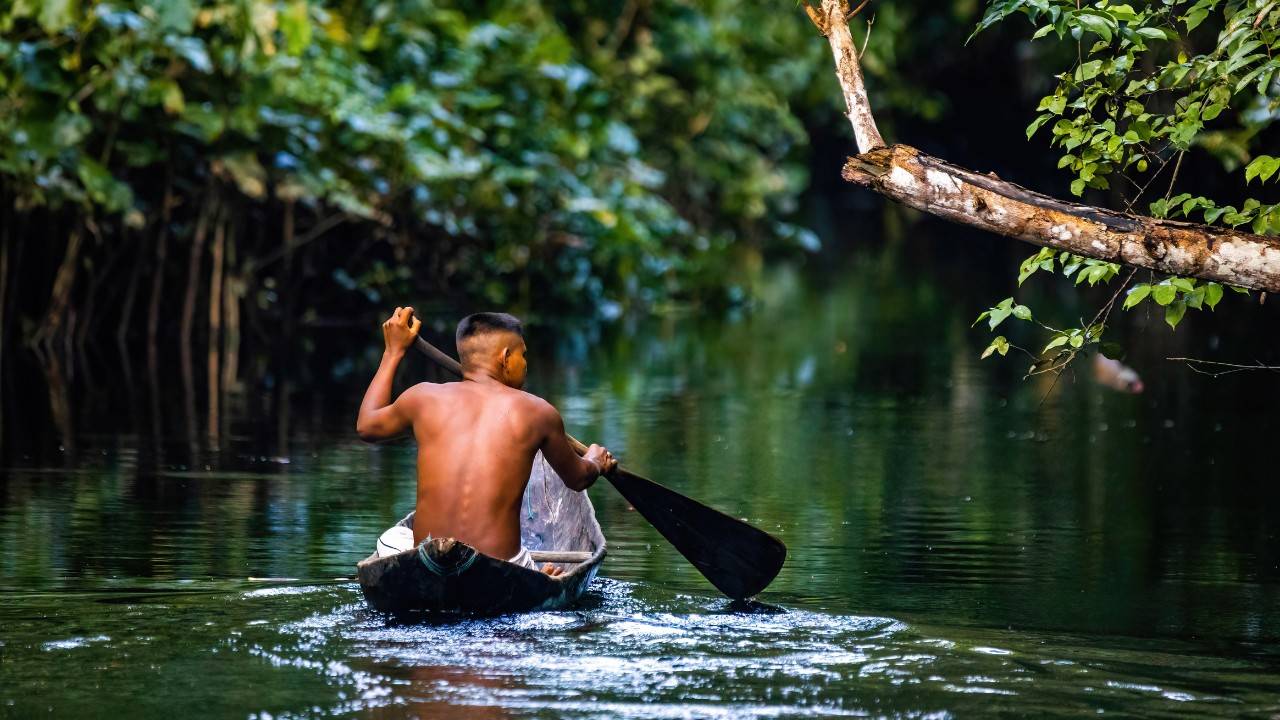In the heart of the Amazon, the Juma Indigenous Territory in Brazil echoes with life. Generators buzz alongside natural forest sounds, signaling the presence of the Juma people. This tribe, once on the brink of extinction due to European colonization, is witnessing a remarkable resurgence.
The 1990s saw the Juma’s numbers dwindle to just one family: three sisters, Boreá, Mandeí, Maytá, and their father, Aruká. Tragically, Aruká succumbed to COVID-19 in 2021, feared as the last male of the tribe. However, his daughters had a different vision for their future.
Mandeí Juma stepped up as the first female leader, supported by her sisters and father. She became the region’s first female chief, symbolically tattooed with her father’s bow and arrow. The sisters had earlier married men from other tribes, a decision that helped preserve their lineage.
Today, the Juma’s village is a hub of activity, accessible only by a two-hour boat ride. Children play in the river, while adults engage in traditional activities like fishing and cassava grinding. The communal maloca, a traditional structure, serves as the village’s social center. Here, the Juma blend traditional practices with modern technology, like using cellphones connected to the internet.
Mandeí has led the tribe for over a decade, recently passing the role to her elder sister, Boreá. Her leadership journey wasn’t easy, and she initially faced resistance due to her gender. But Mandeí persisted, focusing on solutions for her people.
The tribe’s land, comparable in size to Las Vegas, is rich in old-growth Amazon rainforest. A major concern is protecting it from rampant land-grabbing and illegal deforestation. Mandeí vividly recalls the devastation of the Uru-eu-wao-wao village, her childhood home, now encroached upon by non-Indigenous settlers.
A proposed highway nearby heightens the risk of invasion and environmental damage. The tribe has noted disturbing changes like drier rivers and hotter temperatures, which are attributed to deforestation.
To combat these threats, young Juma men, including Mandeí’s nephew Puré, patrol the territory. They use drones provided by the local non-profit Kaninde to monitor remote areas. Puré, embracing his mother’s lineage, proudly identifies as Juma, a sentiment echoed by his cousins Ana Índia and Shakira.
The Juma’s tragic history includes massacres and forced relocations. In 1998, the six surviving Juma were moved to an Uru-Eu-Wau-Wau village. However, the elders, including Aruká, struggled to adapt, leading to further losses. Aruká’s persistence eventually led to the official recognition of their ancestral village as Juma territory.
Language preservation is another vital aspect of their cultural survival. Mandeí collaborated with linguist Wesley dos Santos to create a multimedia dictionary and digital archive of the Juma language. Despite these efforts, Mandeí remains deeply concerned about her tribe’s future. With only 24 inhabitants, the challenge of maintaining their culture and expanding their population looms large.
“The largest responsibility I share with my sisters is to not lose Juma culture as taught by our father,” Mandeí emphasizes. Her leadership, along with her sisters, is a beacon of hope for the Juma’s continued existence and cultural legacy.
More inspiring green news similar to this:

